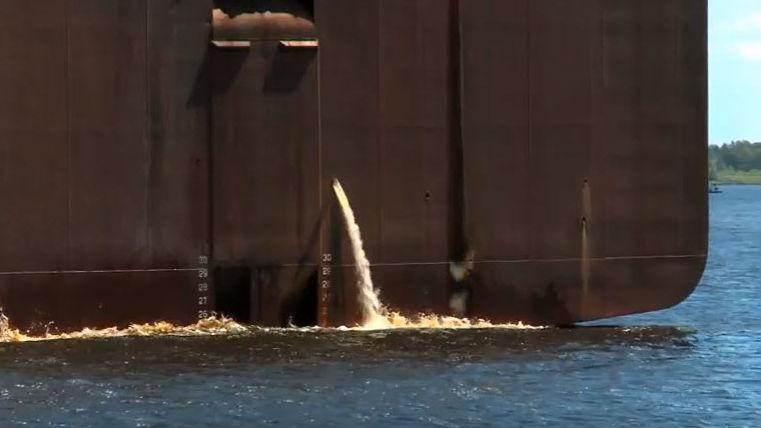Ballast Water Treatment: What Will the IMO Do?

The IMO’s Ballast Water Management Convention, adopted in 2004, reached its criteria for ratification on September 8, 2016, and will enter into force following 12 months. Somewhat simplistically, this means that all vessels must comply with its provisions and eventually meet the Ballast Water discharge standard (as defined by Regulation D-2).
Shipowners are now approaching flag states and requesting a de-coupling of the renewal of the international oil pollution prevention certificate (IOPPC) from scheduled docking in order to achieve potentially five years extension from complying with the D-2 standard and thus postponing the costs of procuring and installing a ballast water management system likewise.
However, the IOPPC implementation reference is currently not referred to in the implementation schedule of the Ballast Water Management Convention, and it may very well be that it never will. It is assumed that MEPC 71 will decide on the final D-2 compliance phase-in mechanism and that the Convention will be changed accordingly after its ratification following the legal procedure that applies.
At MEPC 70, a majority of states argued for postponing the D-2 phase-in program by another two years and still using the IOPP certificate as reference point due to lacking docking capacity and also allowing vendors to “upgrade” their current certificates to also comply with the additional requirements of the revised G8 test-protocol.
If this becomes the case and shipowners continue to follow the extension route made available for them by flag states accepting de-coupling of the IOPP certificate, we will potentially end up with a pile-up in 2024! This will be most unacceptable to the IMO as well as to most of its member states. More realistic outcomes of MEPC 71 are:
1. The IOPPC remains as the implementation reference and entry into force of the D-2 standard of the Convention remains September 2017.
2. The IOPPC remains as the implementation reference and entry into force of the D-2 standard of the Convention is delayed one or two years to September 2018 or 2019.
3. The implementation reference is changed to first scheduled dry-docking and entry into force of the D-2 standard of the Convention remains September 2017.
4. The implementation reference is changed to first scheduled dry-docking and entry into force of the D-2 standard of the Convention is delayed one or two years to September 2018 or 2019.
Why is postponement required, or not?
The industries arguments for postponing D-2 compliance implementation are a lack of docking capacity and a lack of availability of treatment systems approved using the revised G8 protocol.
Vessels operate subject to numerous surveys required for renewal of certificates, and these are vital for the vessel to be allowed to operate. A vast number of them take place during the scheduled docking which takes place most usually every five years. The introduction of the Convention does not in any way increase the necessity of docking. It does require time available during docking for the integration of the system to be installed.
Most vendors will claim that this can be done in parallel with other activities without interfering with them in any way, so the number of dockings will not increase nor will the duration of the docking period. Consequently, the integration of a treatment system will not challenge the global docking capacity.
Preparatory work can be undertaken prior to docking, reducing the associated work-scope during docking, and final commissioning of a system may take place immediately following the docking. Thus, a revision of the implementation reference if using scheduled docking as such, should take this into account.
At present, it is correct that there are no systems certified in accordance to the newly revised G8 protocol. On the other hand, the shipping industry has previously stated, without prejudice, that they will accept U.S. Coast Guard type approved systems being installed onboard their ships. They have also stated that they consider revised G8 systems as equivalent to U.S. Coast Guard.
In early December, we saw the first treatment system being granted U.S. Coast Guard type approval. There are two more systems in the approval pipeline, and we expect these to qualify shortly. Before the end of the second quarter of 2017, another four or even five systems are expected to be qualified by the U.S. Coast Guard – leaving us with a potential of seven to eight systems available before entry into force on September 8, 2017.
In addition, the shipping community has already been granted life-long grandfathering inclusive of compliance for vessels equipped with systems approved under the earlier G8 instrument under the “roadmap” ensuring that “early movers” should not be penalized.
There seems little substance for delaying D-2 compliance implementation. A further delay now, will no doubt hit the treatment system suppliers hard, penalizing them even further, and also penalizing those of them who were early movers.
Our best guess as to the outcome of MEPC 71 is that the IMO will come back to its senses, reject the current arguments for delay and remove the IOPPC reference, as this is now clearly misused by a number of flag-states to allow de-coupling, and revert to docking intervals as the triggering mechanism.
As a change to the convention itself will take time, it is likely that a postponement of the implementation date may be required. However, there should be no need to expand this for more than one year.
Thus, all vessels might have to install a type approved ballast water management system, either an initial G8 approved or a revised G8 approved system, at the first scheduled docking after September 8, 2018.
Realizing the timeline for assessing and preparing for treatment system integration – it’s time to get moving.
InBallast is an independent consulting/ engineering firm.
The opinions expressed herein are the author's and not necessarily those of The Maritime Executive.
